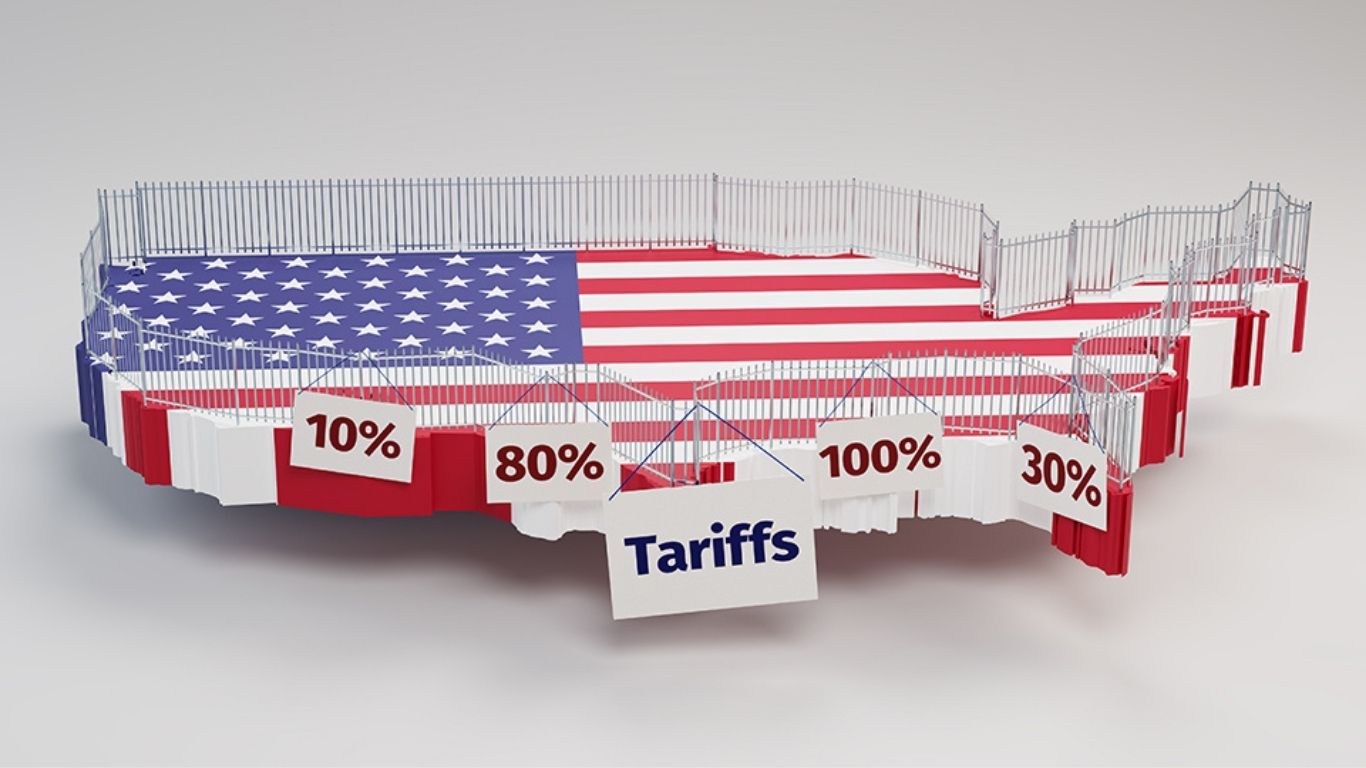Top Canadian ministers said Monday that Canada would be ready for their economic situation to retaliate after President Donald Trump said he was thinking of imposing a 25% tariff on Canada and Mexico on Feb. 1. Trump has been threatening to impose sweeping tariffs in Canada, Mexico, and other trading partners.
On Monday morning, before Trump was sworn in at noon, U.S. media reported that the much-feared 25 percent tariffs on Canadian and Mexican goods that Trump had threatened in November were not expected on day one of his presidency. In two words muttered to reporters as he walked away from an impromptu scrum Monday, Prime Minister Justin Trudeau summarized the Canadian political class’s reaction to reports President Donald Trump would not be imposing 25-per-cent tariffs on Canadian goods immediately.
Canada is one of the most trade-dependent countries in the world, and 75% of Canada’s exports, which include automobiles and parts, go to the U.S. Canada is the top export destination for 36 U.S. states. Nearly $3.6 billion Canadian (US$2.7 billion) worth of goods and services cross the border each day. Despite Trump’s claim that the U.S. doesn’t need Canada, a quarter of the oil America consumes per day is from there. But politicians and observers say Canada is far from out of the woods and that the prospect of a tariff war with the country’s biggest trade partner is still very real.
“It would be a mistake for the American government to proceed with imposing tariffs, in terms of the cost of living in the United States, in terms of jobs in the United States, and the security of supply chains,” LeBlanc said.
Canada Prepares for Potential Trade War as Trump Threatens Tariffs
A 25 percent tariff would be particularly devastating to Canada. Experts have said just a 10 percent levy would save billions of dollars of the GDP and potentially plunge the country into a painful recession requiring government stimulus to prop up the economy. Canada is prepared to impose retaliatory tariffs on the U.S. if Trump eventually moves ahead with any trade action. Officials have already drawn up a plan that will levy immediate tariffs on $ 37 billion worth of American goods if Trump moves against Canada.
Trump issued a memo on Monday night, calling on a number of U.S. departments to — among other things — investigate the causes of the U.S.’s “large and persistent annual trade deficits in goods, as well as the economic and national security implications and risks resulting from such deficits.” The memo also ordered a public consultation to prepare for an upcoming review of the Canada-U.S.-Mexico Agreement (CUSMA) and an investigation of “the unlawful migration and fentanyl flows from Canada, Mexico [and China].” According to the memo, the border security study and trade deficit study should be completed by April 1.
While Trump could reverse course and impose the threatened tariffs at any time, the decision to initially focus on other priorities — like cracking down on migrants and clearing the way for more oil and gas drilling — is still something of a victory for Canada because he had promised trade action on day one, shortly after winning the U.S. presidential election in November.
In one of his last campaign stump speeches before election day, Trump again pitched punishing tariffs as a way to force Canada and Mexico to act on drugs and migrants coming into the U.S.
Trump’s Tariffs Threaten to Devastate Canadian Businesses
A survey from the Bank of Canada released on the same day showed nearly a quarter of Canadian businesses expect their costs to rise as Trump takes office again. About 18 percent of the businesses polled expected their prices to rise, while 11 percent expected them to come down, according to the survey. Forty percent expect that the Trump administration will have a negative impact on their businesses while a third said it was too early to tell.
Kacee Vasudeva, the CEO of auto parts plant Ultra-Form Manufacturing in Toronto, said he thinks Canadian unemployment numbers will “go through the roof” if the tariffs materialize. His own company has 45 employees. Having spent 40 years in the business, Vasudeva says that most of his American customers are fair negotiators and he doesn’t expect that to change. But, he said, “Trump is going to take advantage of us [like] there’s no tomorrow.” Roughly 90 percent of the manufacturing firm’s output consists of small automotive components — including cooling system parts, brake line, and fuel line fittings — that go across the border and are assembled in the U.S. for clients like Ford and General Motors.
Tariffs will ultimately hurt consumers the most, Vasudeva said, but he said his own costs will go up and that his business could suffer as a result. “We are preparing. We will do whatever we need to do to stay in the business.” Canadian oil prices, weakened in recent weeks as speculation mounted that Trump would impose tariffs during his first day back in the Oval Office, rallied on Monday as news spread that the administration would hold off on the threat.
Instead, Trump will direct U.S. agencies to study trade deficits with other countries and “address unfair trade and currency policies by other nations.” To stay in Trump’s good graces, Ottawa should broker a deal with the new president to buy more American goods, double down on new border security measures, dial back immigration levels to what they were in the pre-Trudeau era, crack down on “loopholes” that let “hostile” people enter Canada and accelerate military spending to hit the two percent of GDP NATO target sooner. The federal government confirmed to Radio-Canada last week that it was preparing retaliatory tariffs, applicable to $37 billion in U.S. goods, to impose on the U.S. if Trump went ahead with his own tariffs on Monday. Potential solutions have been a point of discussion between Prime Minister Justin Trudeau and his Council on Canada-U.S. Relations, which includes business leaders like Tabatha Bull, the president and CEO of the Canadian Council for Indigenous Business.




